12 Most Valuable $1 Dollar Bill Worth Money (Rarest List)
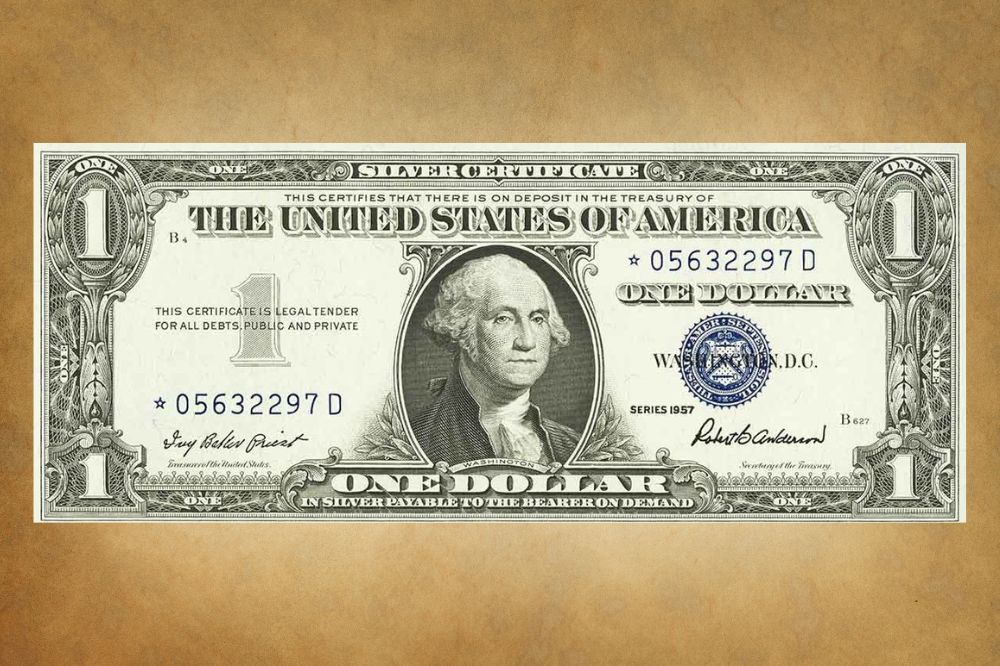
Have you heard that $1 bills could be worth hundreds and even thousands of dollars?
Well, that’s partially true. Most one-dollar bills are only worth their face value. Only rare greenbacks, especially those with an older date, may be worth good money.
That said, with so many varieties, you’d have to do quite some digging to identify the most valuable$1 dollar bill worth money.
Not to worry, though; we researched for you! Below, you will discover highly coveted and the most collectible one-dollar bills that can earn you a fortune.
Let’s dive in to learn more!
A Brief History of the $1 Bill
The United States government issued the first $1 bill in 1862 as a United States Legal Tender Note. This initial bill featured the portrait of Salmon Chase, Abraham Lincoln’s Treasury Secretary.
The bill underwent numerous changes over the years since its official introduction. The current design of the one-dollar note can be traced back to 1963 when the Treasury issued the bill as a Federal Reserve Note.
That said, 1929 was a pivotal year in the history of U.S. currency as it was when the size of paper bills was reduced from large notes to the current small size note.
The most notable change made to the one-dollar bill is the appearance of George Washington’s portrait on the obverse, as painted by the renowned Gilbert Struart.
The small one-dollar bill issued in 1929 was a silver certificate with dark blue serial numbers and a treasury seal on the obverse. The reverse, on the other hand, showed a big ONE impressed on ONE DOLLAR. The $1 silver certificates ran until 1934.
An interesting fact about the $1 bill notes is that in 1933 the Treasury issued $1 United States Notes alongside silver certificates of the same denomination. The silver certificates werein high demand, so the United States Notes helped to supplement the deficit.
These 1933 United States Notes featured red serial numbers and treasury seal. But, only a few of these notes made it to circulation, with most left in the vaults.
Another notable change is that the words ONE SILVER DOLLAR changed to read ONE DOLLAR right under Washington’s portrait. This change emphasized that the new silver certificates could be used in exchange for silver bullion.
You will also note that the seal is superimposed over ONE after being moved to the right. This left plenty of space for a blue “1” on the bill’s left. The blue 1 was, however, changed to gray in 1935, while the treasury seal was made smaller and a stylized ONE DOLLAR added over. This year, the bill’s reverse was also changed to the present design.
The $1 bill was the first United States currency to feature our country’s motto, IN GOD WE TRUST. In 1963, the Treasury produced Federal Reserve Notes, replacing the previous silver certificates. In the same year, the seal and serial numbers changed to being printed in green, and six years later, the wording on the bill changed from Latin to English.
The Most Valuable $1 Dollar Bills
Here is a list of the most valuable $1 bills worth money.
1. 1862 $1 United States Note
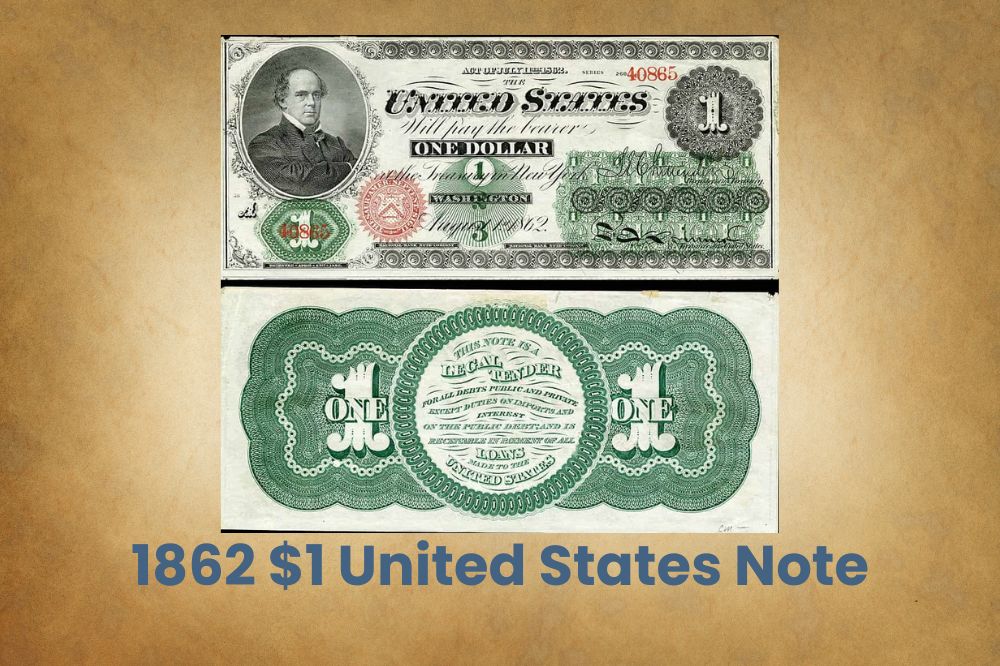
Along with other denominations such as the $2, $5, and $100, the 1862 $1 was among the first legal bills printed in the country as authorized by the First United Stated Legal Tender Act of 1862.
The 1862 $1 legal tender notes were large bills and are quite scarce today, making them highly collectible in the numismatic circles.
In circulated condition, an 1862 $1 note is worth between $200 and $400 depending on the condition. Uncirculated examples are extremely rare and will fetch as much as $3,500 and up to $7,000 for notes in gem condition.
2. 1869 $1 United States Note
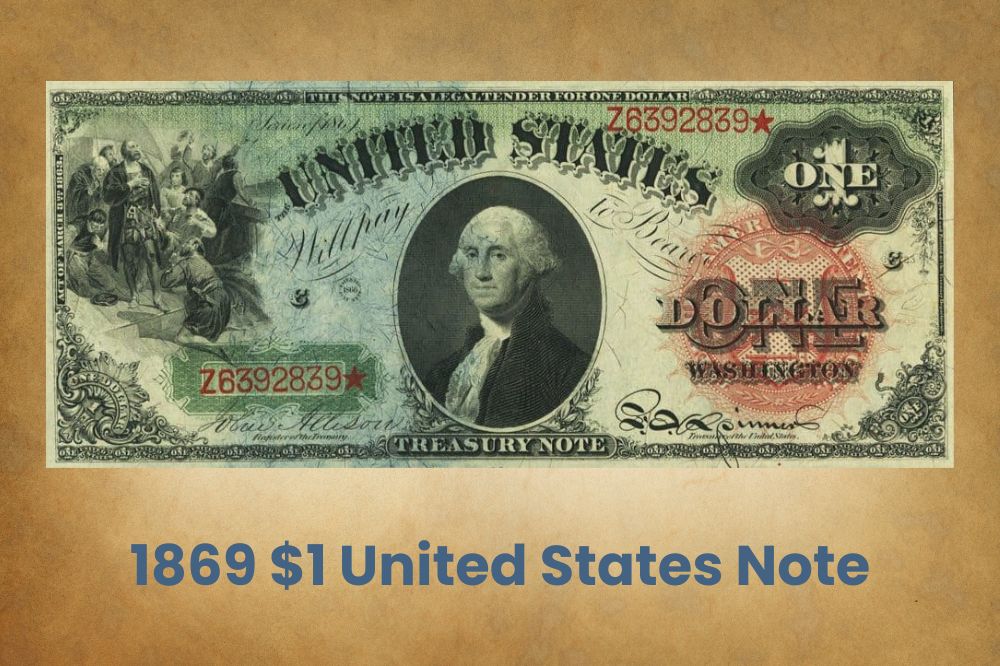
In 1869, the one-dollar bill underwent its first design changes, the most notable being Salmon Chase’s replacement by George Washington. The new bill also depicted Christopher Columbus’ voyage as he explored for land.
Although the 1869 one-dollar bills are United States Notes, you will notice that the bill reads Treasury Note under Washington’s portrait on the obverse. Such oddities add to this bill’s fascination among collectors.
In circulated states, you can expect at least $300 for your 1869 one-dollar bill, but this price can peak to $2,500 for circulated bills graded Extremely Fine or About Uncirculated.
Uncirculated specimens can bring between $7,000 and $10,000, depending on the condition.
3. 1874 $1 United States Note
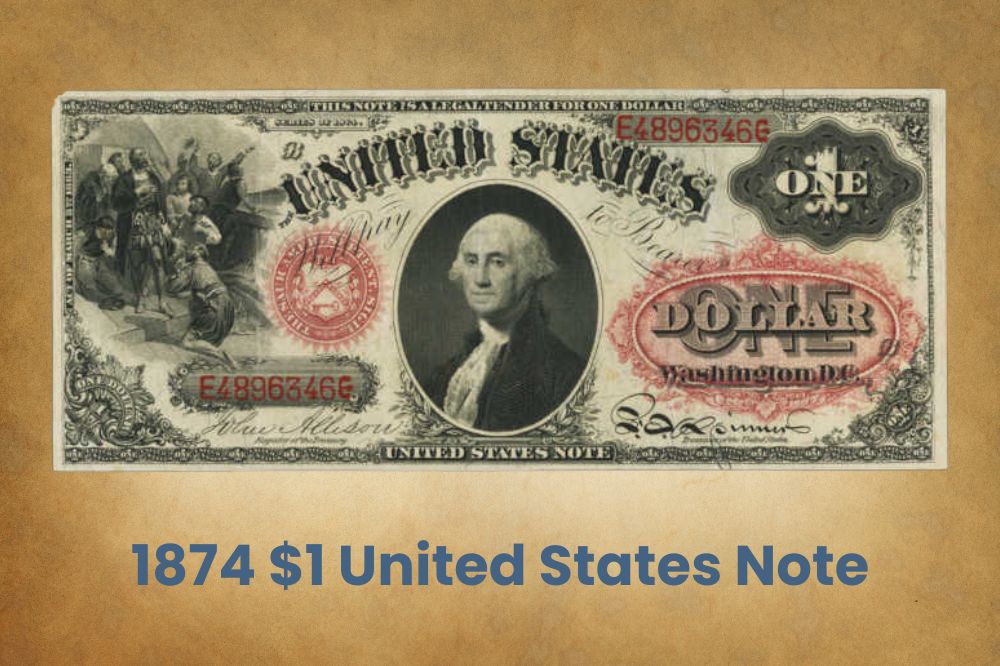
Additional design changes happened in 1874, and the new design would be applied to the $1 bills issued in 1875, 1878, 1880, and 1917.
The 1874 dollar bills feature Washington’s portrait on the obverse and Christopher Columbus’ iconic vignette.
One dollar bills in this series, graded fine to about uncirculated, will fetch between $125 and $400. But this price can increase significantly for uncirculated and gem-quality dollar bills, with examples selling for $4,000 to $10,000.
4. 1923 $1 Bill
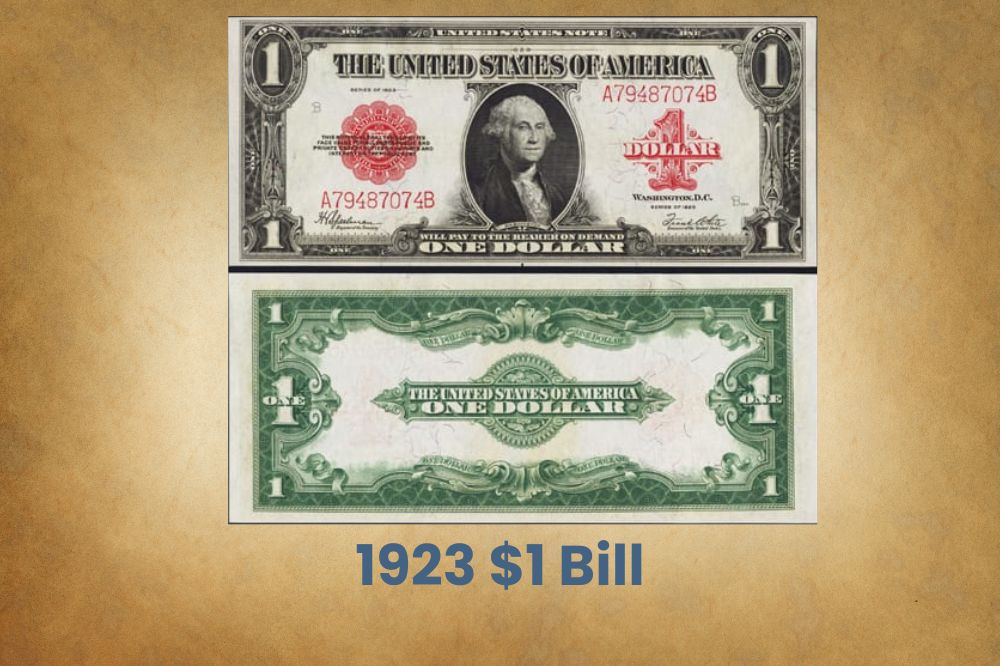
The 1 dollar bills underwent additional changes, acquiring a design similar to silver certificates. The federal seal is repositioned and placed on the left while Washington’s portrait is changed to face right. Columbus’ vignette is also completely removed.
Millions of $1 notes were printed and released into circulation in 1923, making this the most common large-size note.
That said, some varieties are rare and will command a premium. For example, 1923 $1 with a red seal and those with a low serial number, specifically below 100, are very valuable.
You should also look out for $1923 one dollar bills signed by Woods & Tate and feature a star at the start of the serial numbers. Depending on the condition, these rare notes can sell for $1,000 or more.
5. 1928 $1 Bill
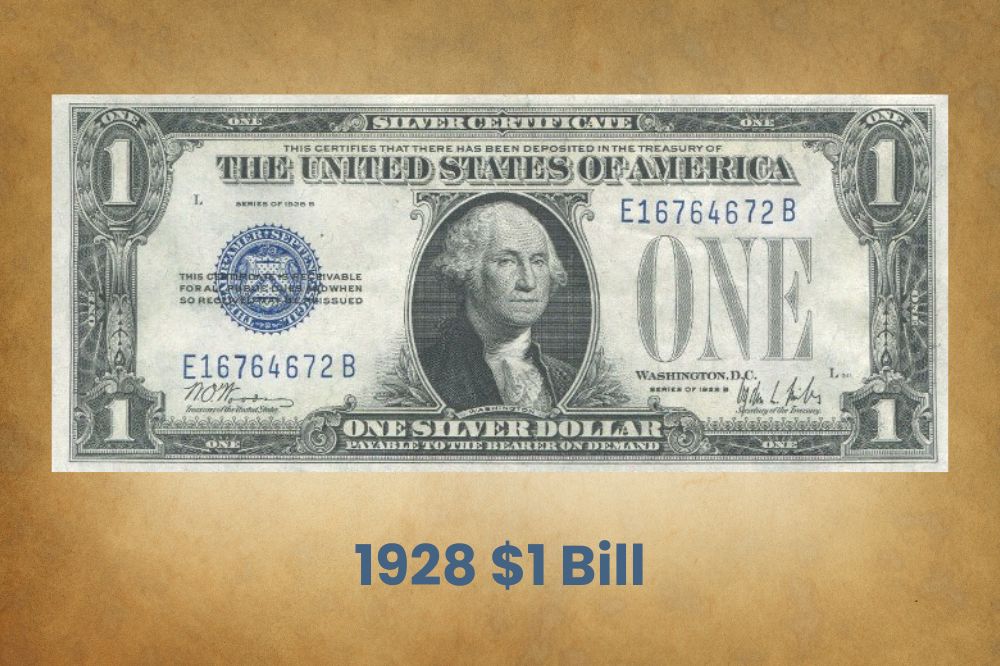
Most denominations, including the $1 bill underwent significant changes in 1928. Specifically, paper notes were made smaller, and the dimensions remain the same today.
These bills are very popular, with collectors interested in their blue-colored serial number and seal. A conspicuous black-coloured ONE appears below the serial number on the right
You may come across six different 1928 $1 silver notes. These include 1928, 1928A, 1928B, 1928C, 1928D, and 1928E, but none is more valuable.
One-dollar 1928 bills with a star at the end of the serial number might fetch a premium. Also, some examples with serial numbers above 1000 and or below 100 can be worth $100- $200 in circulated condition and about $1,000 in uncirculated state.
They’ll have an asterisk next to the serial number. Apart from the A to H that identify 1935 $1 notes, look out for the red R or S on some $1 notes. R is for standard printing paper while S is for experimental printing sheets. Tell us about your 1935 dollar bills in the comme
6. 1886 $ 1 United States Note
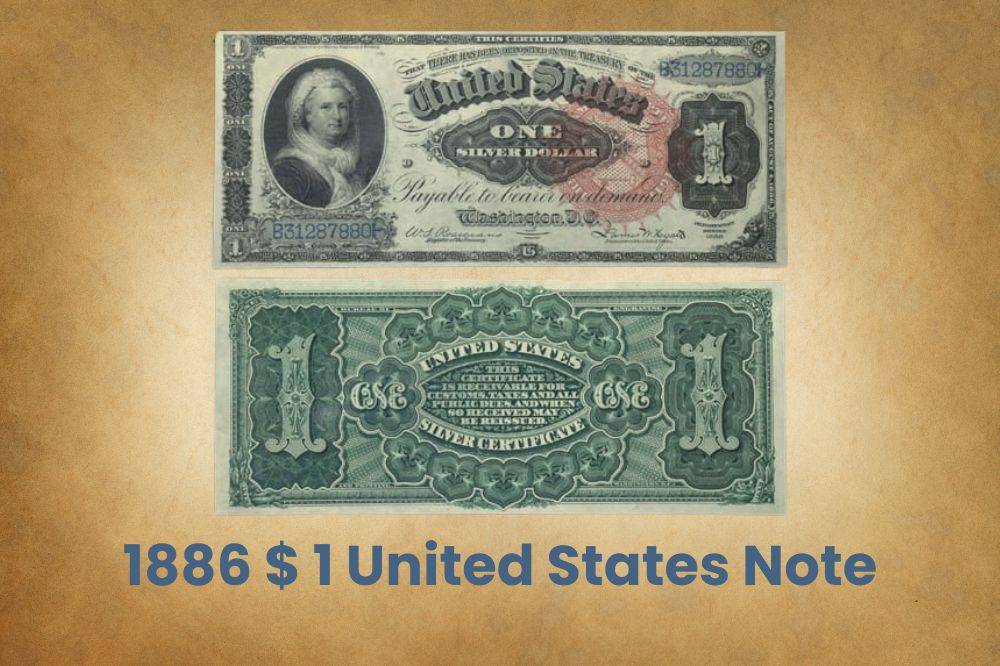
The first lady, Martha Washington appeared on three silver certificate series, including the 1886 one-dollar silver certificate.
The seal type, signature combination, and condition affect the value of an 1886 $1 silver certificate. Worn silver certificates from this year are relatively common but uncirculated and gem examples are being discovered frequently.
In good to extremely fine condition, expect about $225 for your 1886 $1 silver certificate. This price can increase significantly to about $2,500 or more for uncirculated bills graded MS63 and above.
7. 1875 $1 National Bank Note
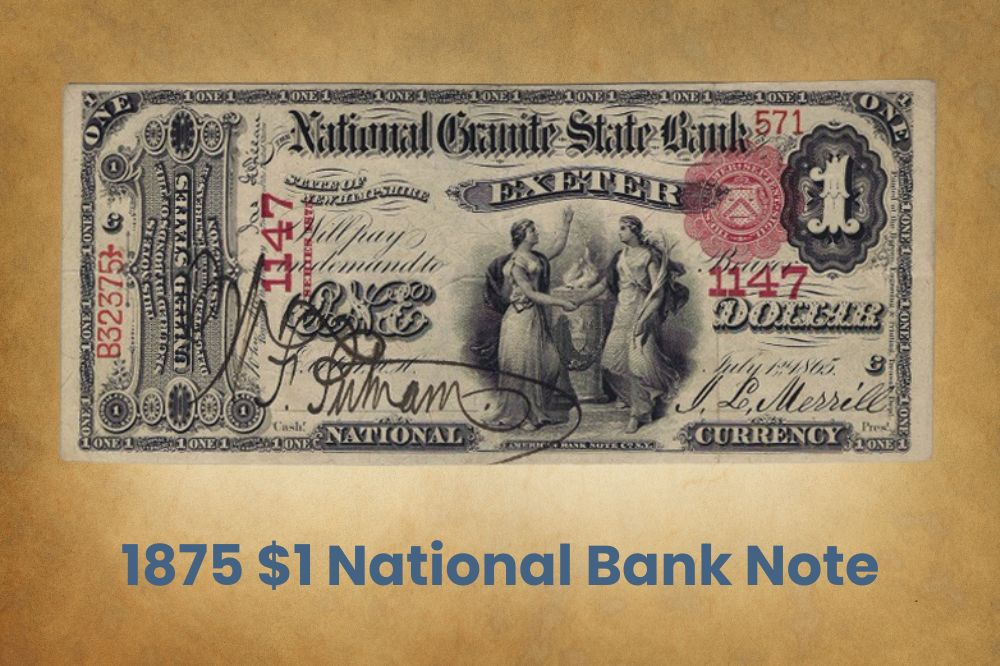
Some banks printed one dollar notes, which came to be known as national bank notes. Just a few banks issued one dollar notes dated 1875, making these bills particularly scarce.
Since only a few banks issued one dollar notes dated 1875, the bank of issue will significantly affect the value of these bills. Other factors that will influence how much your 1875 national bank note is worth include the serial number, seal color, and the condition.
The 1875 $1 bills in circulated but good condition can fetch about $250. Uncirculated examples, typically kept as souvenirs by bankers and collectors, are rare gems often selling for $3,000 or more.
8. 1899 $1 Silver Certificate
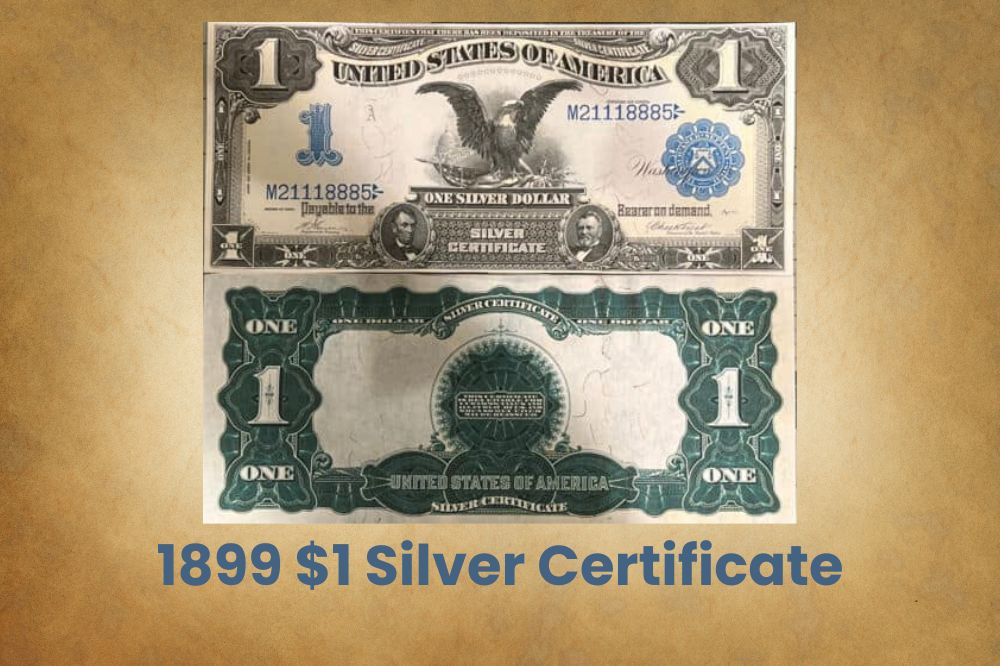
Also known as Black Eagles, $1 silver certificates from 1899 are relatively common given that the Treasury printed hundreds of millions of them. These notes feature the portrait of Abraham Lincoln, Ulysses Grant and a black eagle.
Despite being common, there are some rare varities worth good money. For one, these silver certificates come in 12 different signature combination but the most sought after is the courtesy autographed examples.
Courtesy autographs are paper bills signed or autographed by a treasury official. Back then, and even to day, you could send a bank note and have a treasury official sign and mail it back. These bills can fetch as much $350 in circulated condition and up to $1,000 for uncirculated examples.
Rare signature combinations can also add a premium to your 1899 $1 silver certificate as can some serial numbers. For example, silver certificates dated 1899 with a serial number below 100 or with a star symbol can sell for as much as $1,500 or more depending on the condition.
9. 1890 $1 Treasury Note
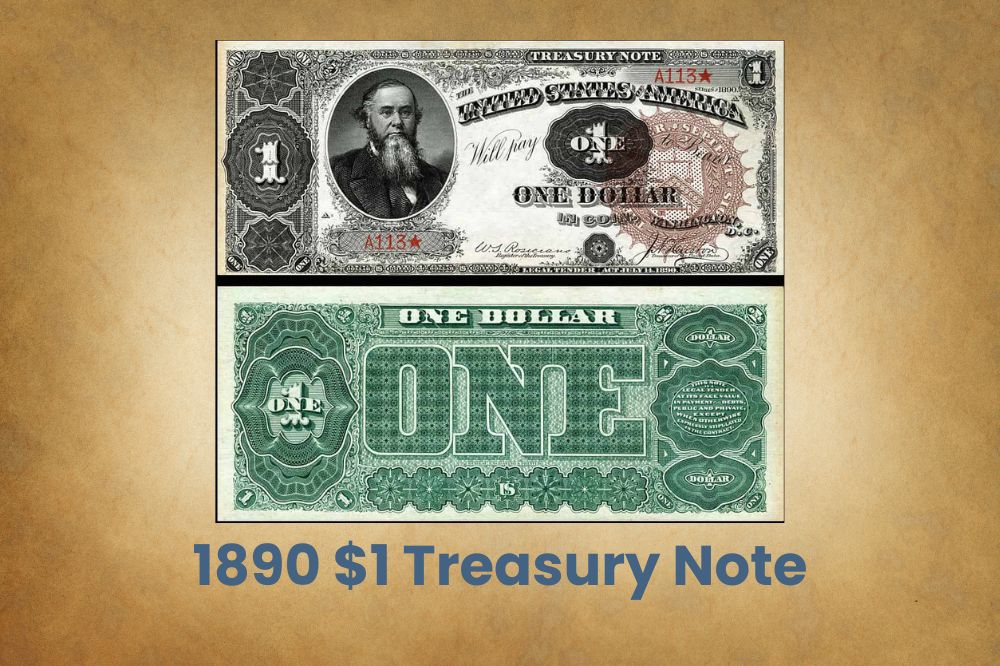
The 1890 $1 treasury note series is quite rare and can be quite challenging to obtain in higher grades.
Examples with a rich green color on the reverse with a bold ONE are notably rare. These notes also show the portrait of Edwin Stanton.
While a star symbol can add a premium to a $1 bill, this is not the case with the 1890 one dollar bills because all of them have the star symbol on the serial numbers.
It is also noteworthy that the 1890 $1 dollar treasury note series has three different signature combinations. These include Rosecrans and Huston with a brown seal, Rosecrans and Nebeker with a brown seal, and Rosecrans and Nebeker with a red seal. All three combinations are rare and worth good money.
Circulated 1890 $1 treasury notes in good condition are worth about $250- $400. In uncirculated grades, these bills can fetch as much as $1,000 or more depending on the condition and signature combinations.
10. 1917 $1 Legal Tender Note
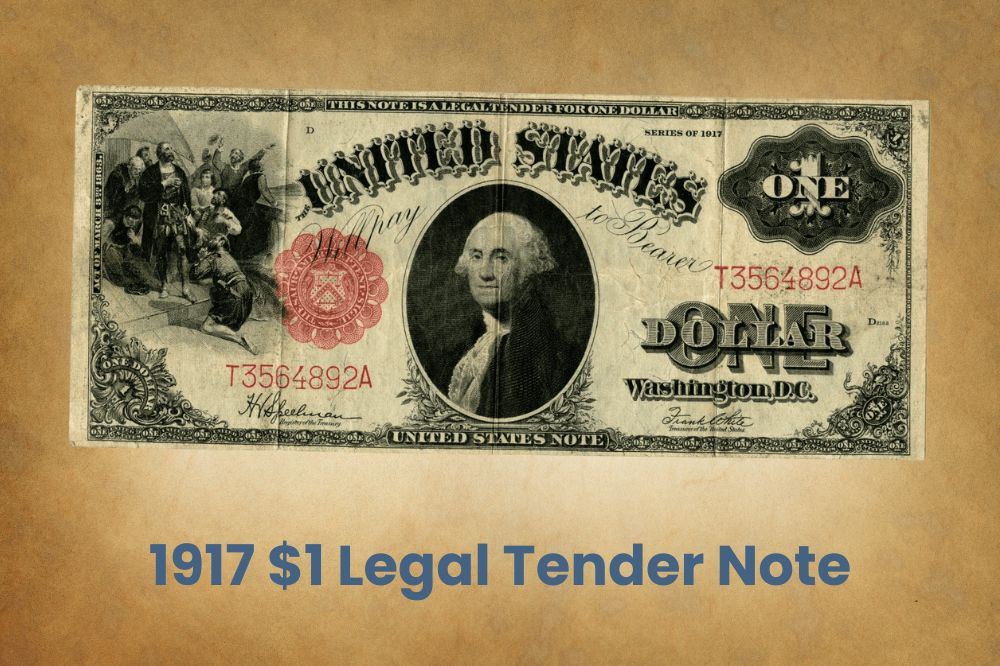
The $1 bills dated 1917 were issued as legal tender notes featuring a portrait of George Washington and a vignette of Christopher Columbus.
Notes with stars in the serial number do not exist for 1917 $1 bills, so the condition is a major determinant of value with these notes.
A particularly rare variety to look for is one with the signature combinations of Burke and Elliot. In good condition, such an 1890 $1 note is worth $450-$700 while uncirculated one in gem condition will fetch up to $1,150.
11. 1878 $1 Silver Certificates
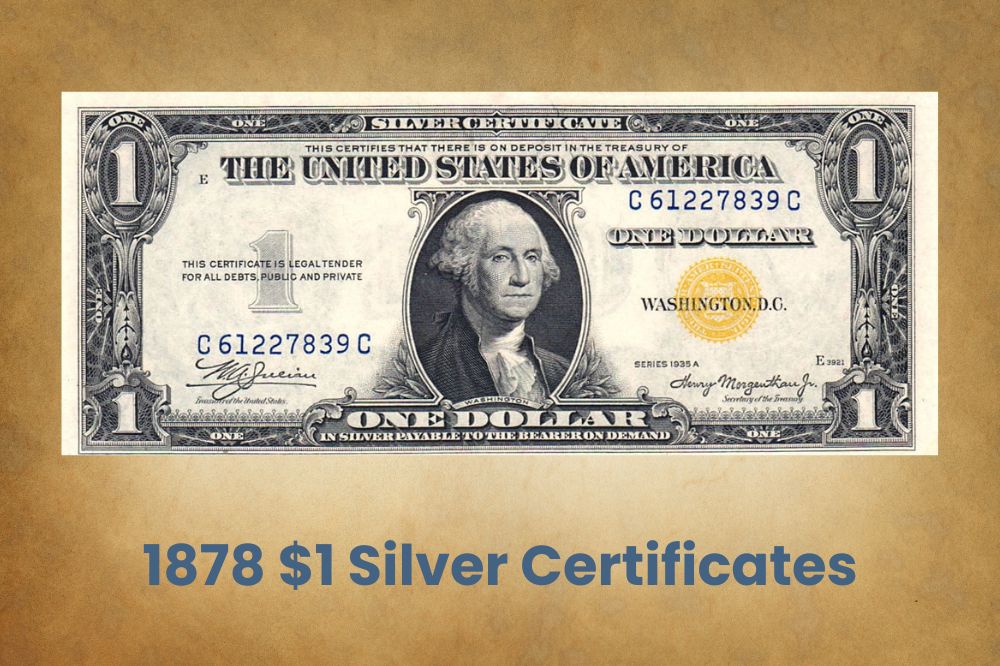
The 1878 $1 silver certificates are highly sought-after given that they are a one-year issue note with only one signature combination, making them rare. These notes are signed by Gilfillian and Allison.
These notes feature the portrait of George Washington in the center and a group of pilgrims on the left. All 1878 $1 silver certificates have red serial numbers and seals.
Circulated 1878 $1 silver certificates will fetch about $300 while uncirculated examples have previously been sold for $2,500- $4,500 depending on the coin’s condition.
12. 1896 $1 Silver Certificates
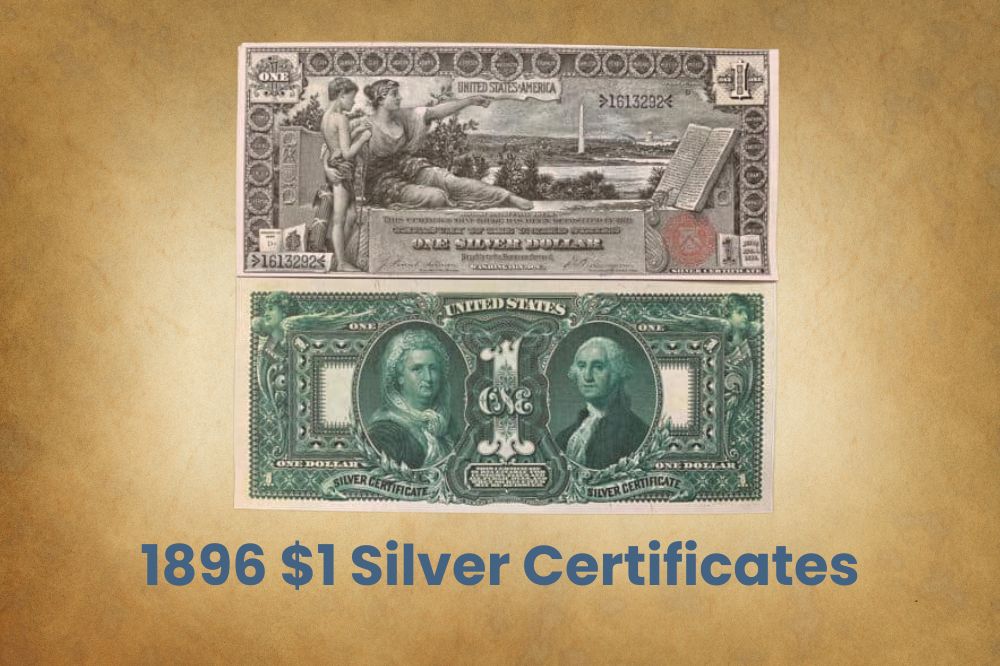
The 1896 $1 silver certificates are highly sought after and is an example of a one-year issue paper bill. While $1 bills have several series years, the 1896 $1 silver certificate has no ongoing series.
These notes feature the portraits of Martha and George Washington on the reverse. All have dark blue serial numbers and a red seal.
The 1896 $1 silver notes are also known as educational notes. They portray the image of a woman reclining and pointing toward the Washington Monument with her arm around a young boy. You will also notice the name of several Americans known for the artistic, cultural, and historical contributions to the country.
There is a significant price difference between low grade and high grade 1896 $1 silver certificates. In circulated condition, you can expect about $200-$300. For uncirculated examples, your $1 silver certificate dated 1896 will fetch as much as $2,000 or more depending on the condition.

Hi,if I need to sell my notes in South Africa, where can that be done,I have a single dollar bill and a 2 dollar bill.
Kind regards
Zola
I have a1928A blue seal 1 dollar, serial # G57142695B, just wondering if it is possibly worth anything??
One dollar bill SERIES 2017
Serial number
L01275417*
ANY VALUE
I have a 1935 E.one dollar Note
Serial number k34152168I Blue seal.is it worth anything
1957 A series Silver Certiciate Blue Seal 1$ bill Mint condition anyone know how much could be ? i’ve seen on ebay some are 35,000$
I have a 1935 E blue silver certificate U09999987 is it worth anything
Hello name is David Williams and I have a 1 dollar silver certificate and I have old coins as well and 2 of the 2 dollars bill
00012313* any value 2017 series $1 dollar bill
1935 silver certificate
00012313* any value 2017 series $1 dollar bill
I have two 1928 1$ notes one of them having writing on the back about being a first Radio 1$ of Laborte family or Laporte family. Can quite make it out.